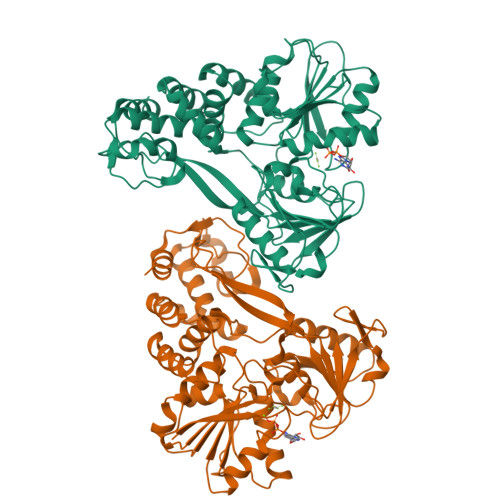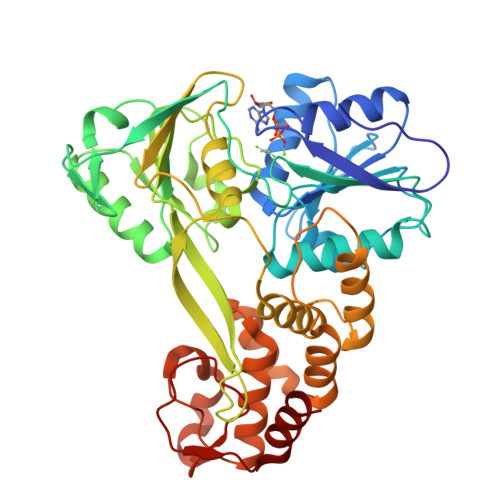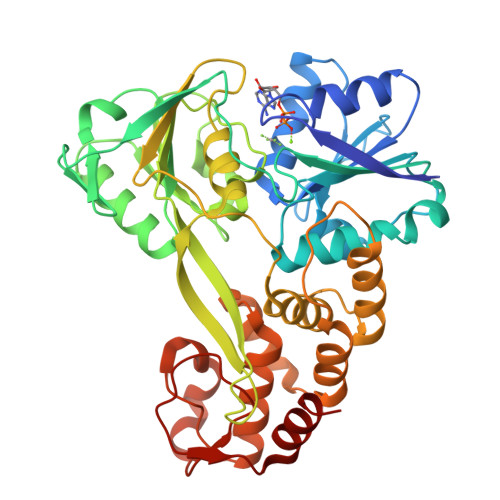The Spring alpha-Helix Coordinates Multiple Modes of HCV (Hepatitis C Virus) NS3 Helicase Action.
Gu, M., Rice, C.M.(2016) J Biological Chem 291: 14499-14509
- PubMed: 27226535
- DOI: https://doi.org/10.1074/jbc.M115.704379
- Primary Citation of Related Structures:
5E4F - PubMed Abstract:
Genomic DNA replication requires helicases to processively unwind duplexes. Although helicases encoded by positive-strand RNA viruses are necessary for RNA genome replication, their functions are not well understood. We determined structures of the hepatitis C virus helicase (NS3h) in complex with the transition state ATP mimic ADP·AlF4 (-) and compared them with the previous nucleic acid-associated ternary complexes. The results suggested that nucleic acid binding promotes a structural change of the spring helix at the transition state, optimizing the interaction network centered on the nucleophilic water. Analysis of ATP hydrolysis with and without conformational restraints on the spring helix further supported the importance of its action for both nucleic acid-stimulated and basal catalysis. We further found that an F238P substitution, predicted to destabilize the helix, diminished viral RNA replication without significantly affecting ATP-dependent duplex unwinding. The stability of the secondary structure, thus, seems critical for additional functions of NS3h. Taken together, the results suggest that the spring helix may be central to the coordination of multiple modes of NS3h action. Further characterization centered on this element may help understand the molecular details of how the viral helicase facilitates RNA replication. This new structural information may also aid efforts to develop specific inhibitors targeting this essential viral enzyme.
Organizational Affiliation:
From the Laboratory of Virology and Infectious Disease, The Rockefeller University, New York, New York 10065 mgu@rockefeller.edu.






















